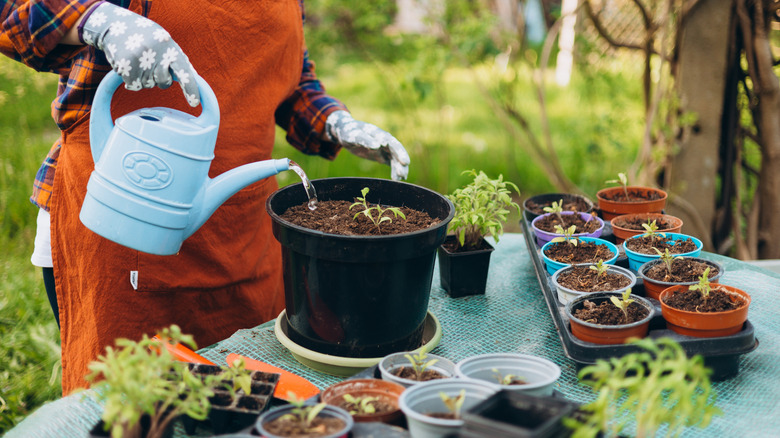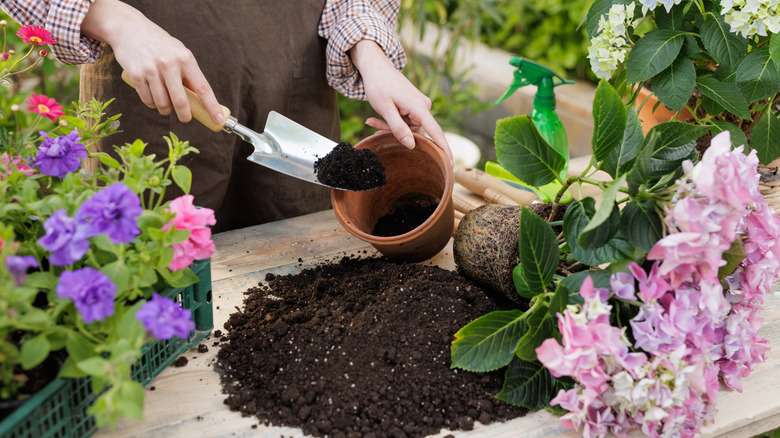The Surprising Reason Your Planters May Be Attracting Pests
There are many benefits of growing a container garden, and planters offer more options for people who do not have space for garden beds. With that said, there are still some issues that can come up with planters. Some mistakes may increase the risk of plant diseases, poor drainage, and even pest infestations. One possible issue is using untreated lumber at the bottom of planters, as these may attract certain wood-eating pests and create other problems for your plants.
Untreated lumber or wood chips are sometimes used as a material at the bottom of planters to help improve overall water drainage. This type of lumber is not treated with preservatives, heavy metals, or chemicals, which can make this option seem like a safe choice for your plants. However, lumber is also notorious for attracting certain types of pests, including termites, wood-boring beetles, and carpenter ants. Termites, in particular, can attack the roots of plants, and this is a common problem in garden beds that have untreated lumber, too. Not only can the presence of these insects possibly lead to infestations in your plants, but these are also typically pests you do not want near your home overall.
Why untreated lumber is not an ideal choice for planters
Aside from when you use them for drainage, generally having untreated lumber anywhere around your container garden can attract wood-eating pests. Insects like termites or carpenter ants can cause serious damage to your home. Ideally, the fewer items in your garden that can attract these pests, the better. Besides attracting pests, untreated wood chips can also decompose and rot quickly when this material is placed at the bottom of your planters. Not only can this increase the risk of root rot in your plants, but you may also have to keep adding more soil to your pots or planters due to poor drainage. If you have untreated wood in your planters and are noticing termite or other pest activity, it's important to remove these items immediately.
The good news is that there are other alternatives to support your plants without attracting wood-eating pests. For one, some experts argue against placing any materials in the bottoms of planters altogether, as doing so may create too much moisture in the soil rather than improve drainage. Instead, all planters need drainage holes and good quality soil at the bare minimum. Rather than adding any items at the bottom of your planters, an even better option is to add mulch around plants along the top of the soil to help maintain moisture while reducing the chances of water splashing pathogens from the soil onto plant foliage. This strategy works especially well as one of the many tips to grow tomatoes in containers. Some of the mulch options include bark chips, pine straw, grass clippings, and leaves.

